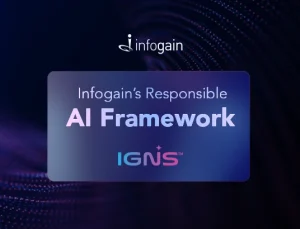- Posted on : November 6, 2018
-
- Industry : Corporate
- Type: News

The role of technology leadership has changed and evolved over the years in many different ways. There are some fundamental underlying reasons for this change.
Primarily, the rate of change of technologies has accelerated significantly. And, the world around us is currently in a hyper innovation cycle, one that is set to completely transform our lives in the future. The concept of marketplace platforms is a great example of innovation powered by technology and allows companies like Airbnb, Uber, eBay, Paytm to thrive.
These online marketplaces bring buyers and suppliers together in a very unique and efficient way, thereby expanding the size of the market. The growth of these platforms is further fueled by the emergence of new tools and programming languages that one needs to know to be a successful in today’s times.
Gone are the days where one could build a whole career just by mastering one technology or product, like COBOL or SAP / Oracle. Today’s workforce needs to be on top of the fast-emerging tools and technologies and constantly upskill themselves to stay relevant.
In addition, the rising client expectations and the fact that the offshoring industry began as a “cost arbitrage” opportunity needs to be considered as well. This means that it is no longer about the size of the business but about capability building and ability to ensure the outcomes. For tech leaders, it means more client contact and coverage, more focus on their business and domain, and more travel to spend time in the market.
Building Talent
When it comes to building talent, the needle has moved from a focus on quantity to quality. In many ways Infogain is well positioned for this shift. While we may not be in the large scale 24*7 AMS business, we are in the digital transformation business. This needs very current and cutting-edge skill. The ability to mold and shape raw talent is more important than the source of talent.
Infogain is addressing this challenge by investing in large scale and unique training models, leveraging our Digital COEs to involve our staff in POCs and hands-on projects on latest areas, certifications and focus on business domains. Activities such as hackathons and contests have been perceived as a good way to source talent. They build excitement for sure and help build talent over the long term which is critical.
Getting started
Budding software professionals need to learn and use a variety of programming languages, irrespective of whether these languages are currently hot in the market or not. Few examples of popular programming languages include:
- JavaScript: It is simple to learn and at its deep end, has many frameworks springing out of it. It is vital as a base.
- C++ or Java: Either of them is good to learn as an object-oriented language
- A straight forward procedural language like C
- A functional language such as Haskell.5.
- A crucial database language like SQL6.
- Bonus – learn Python. It is making a comeback of sorts via ML and AI.
Even with knowledge of a variety of programming languages, the “big picture” of what we are trying to achieve is important. Often coders get so close to the specific requirement that they lose sight of the end goal. This results in code that meets the specific needs but sometimes not the overall business needs of the enterprise. It is critical to first spend time understanding the overall objectives and where their piece of functionality / code will eventually fit. Such an approach will make for a much better outcome.
Good communication skills, oral and written are always needed. Irrespective of how talented a coder is, without communication skills, role or responsibility expansion is unlikely.
(This is a Guest Column by Eddie Chandhok, President of Global Delivery for Infogain}






